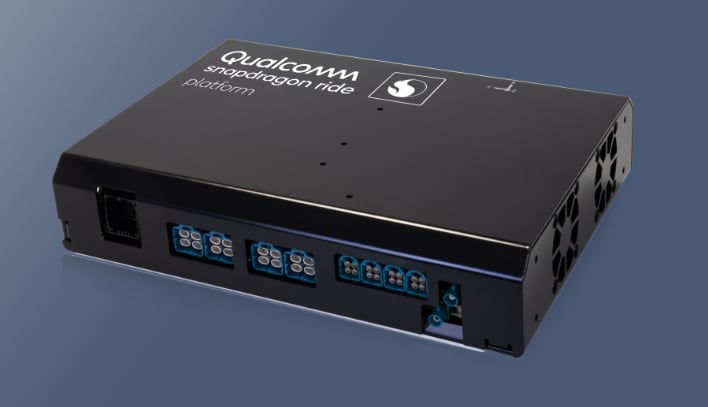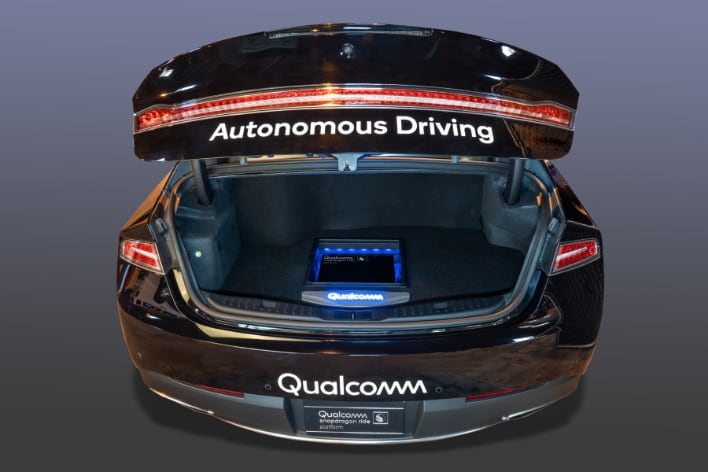Qualcomm's Newest Snapdragon Platforms To Make Cars Smarter, Safer And Hyper-Connected
Qualcomm apparently is going all out, as the new Snapdragon Automotive Compute Platform is based on the 5nm process node, which is shared with the company's recently introduced Snapdragon 888 5G Mobile Platform. The platform will tie together various functions including engine control units (ECUs) along with digital instrument cluster displays and augmented reality heads up displays (AR-HUDs).
The new platform SoC will also oversee the central infotainment display found inside most new vehicles along with rear seat displays in high-end luxury vehicles along with e-Mirror replacements. For those not familiar, e-Mirrors feature an LCD display (hooked up to a rear-facing camera) instead traditional rear mirrors. This is handy especially in SUVs for when you might be carrying a bulky load in the cargo area that blocks your rearward view.
Although Qualcomm doesn't get into specifics, there's a 6th generation Kryo CPU running the show that is teamed up with a 6th generation Adreno GPU (to support the high-resolution displays onboard), Hexagon AI processor, and Spectra ISP. There's also support for Wi-Fi 6 to distribute cellular connectivity to passengers and Bluetooth 5.2 support.
5G, AI And Alexa Built In
Speaking of cellular connectivity, Wi-Fi, and Bluetooth, Qualcomm Cellular Vehicle-to-Everything (C-V2X) leverages all three to keep vehicle occupants internet-connected at all times. All of this is made possible both with Qualcomm's legacy 4G LTE modems and its newer 5G LTE modems that have found their way into today's smartphones (although 5G Sub-6 connectivity is generally the go-to in automotive applications). In addition, Qualcomm also has provisions for OEMs to integrate the Amazon Alexa Automotive SDK for hands-free intelligent voice assistants. This functionality will be available as an extension module for both 3rd and 4th generation Snapdragon Automotive Cockpit Platforms.

“Qualcomm Technologies’ heritage as an innovative wireless technology company has empowered us to engineer 4G and 5G platforms that unlock the potential of connected transportation, as well as advanced infotainment and telematics systems, while delivering the promise of improved vehicle safety and autonomy,” said Qualcomm Automotive SVP And GM Nakul Duggal. “The growth in the number of automakers, Tier-1 and Tier-2 customers and technology companies tapping into Snapdragon 4G and 5G Automotive Platforms is a testament to our commitment to develop premium driving experiences for the next-generation car.”
Qualcomm will make available its 4th Generation Snapdragon Automotive Development Platform for partners during Q1 2021, and the actual production of hardware is expected to commence in 2022.
Qualcomm Snapdragon Ride Hits The Road

Finally, Qualcomm has announced new extensions to its Snapdragon Ride Platform via new SoC and AI accelerators for automotive safety integrity level D (ASIL-D) systems. Qualcomm is providing a scalable solution that can power Level 1 Advanced Driver Assistance Systems (ADAS) within a sub-5W power budget all the way up to Level 4 autonomy with 700 TOPS compute on command. These solutions will be going toe-to-toe with NVIDIA’s Drive platforms.
Qualcomm expects that its Snapdragon Ride SoCs and AI accelerators will begin powering Level 2 through Level 4 for ADAS starting in 2022.



